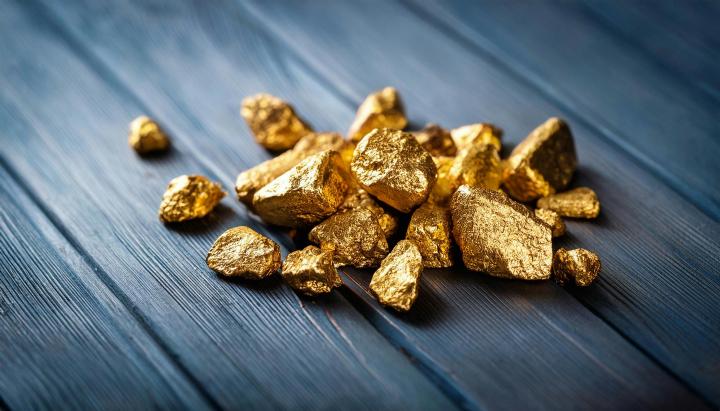
After years of underperformance, investors are once again paying attention to commodities. They are using gold to hedge against higher inflation but also recognize the growth potential tied to the energy transition.
Commodity prices are known for their strong volatility and went through a weak period between 2016 and 2020. In recent years, however, sentiment has clearly improved and investor interest in this asset class has been rising again.
“Some clients act opportunistically and increase their positions when prices go up. At the same time, we see investors reassessing their strategic allocation to commodities,” said Darwei Kung of DWS in an interview with Investment Officer.
A key catalyst was the inflation peak in the United States a few years ago, the head of commodities explained. “Inflation remains an essential risk for investors, and commodities have traditionally served as an effective hedge. Diversification benefits also play a role. During the pandemic years, correlations between commodities and other risky asset classes rose sharply, as did correlations within the commodities market itself. Those relationships have now largely returned to more normal levels.”
Within the Bloomberg Commodity Index, DWS mainly focuses on the larger and heavier-weighted components. In doing so, the asset manager also taps into the energy transition. “Think of copper, which is needed for renewable energy infrastructure, energy storage systems, and electric vehicles. The price has already risen eighteen percent this year due to a tight balance between supply and demand. In its wake, silver has also appreciated, partly thanks to its growing use in solar panels,” said Kung.
Natural gas also benefits from the energy transition, he added. “Because solar and wind power depend on weather conditions, gas-fired plants remain crucial for maintaining a stable electricity supply. Demand for natural gas has therefore increased sharply, while Russian supply has dropped significantly due to the war in Ukraine.”
Gold keeps shining
Kung also sees a strong long-term story in gold. “The gold price has already risen considerably, but we expect the precious metal to continue performing well in the coming years. Central banks are increasing their gold reserves, often at the expense of the US dollar. China in particular is trying to reduce the dollar’s role in global trade and strengthen the yuan amid trade tensions with the United States. Other emerging economies closely aligned with China and Russia are also swapping US Treasuries for gold. This dedollarization has only just begun and could continue for years.”
In addition to structural demand from central banks, speculative investor demand is also supporting the gold price. The Federal Reserve’s monetary policy has shifted from a focus on price stability to preserving employment, Kung believes. “We expect the US labor market to weaken and real yields on Treasuries to gradually decline. That supports the gold price. If inflation were to rise unexpectedly, gold would also outperform bonds and equities. In extreme scenarios, such as a geopolitical shock, the gold price could even double,” said Kung.
Opportunities for uranium
Chris Berkouwer, portfolio manager at Robeco, also notes that commodities are back in the spotlight. “Gold in particular is attracting attention again. Investors are worried about stagflation and the rising US debt burden. In that climate, gold once more functions as a safe haven,” he said.
Within the Robeco Global Stars Equities Fund and Global Climate Transition Equities, Berkouwer is responsible for the energy, materials, and industrial sectors. Robeco does not invest directly in commodities, but the funds gain exposure through equities. The fund holds positions in a gold mining company and a Japanese supplier of machinery and components for the gold industry.
Through such suppliers, the portfolio manager also aims to benefit from the energy transition, which he considers more attractive over the long term than gold. Copper often comes into focus as a critical raw material for sustainability. Yet Berkouwer takes a measured view. “Copper is primarily a derivative of the global economy. The metal has broad industrial uses, which drive demand in periods of economic growth. This year, the price has been temporarily pushed up because several mines, including in Africa, were shut down for maintenance. But copper prices are still around the level of twelve years ago, and its role in the energy transition alone is not yet sufficient to sustain a lasting price increase.”
That is why Robeco’s impact funds place more emphasis on commodities that directly benefit from the energy transition, such as uranium. “Nuclear plants are essential to meet the growing demand for electricity, driven by the electrification of the economy and the construction of data centers. That will boost demand for uranium. Since it takes years to develop new mines, supply will lag behind demand for the time being,” said Berkouwer.
He is significantly less positive about lithium. “Demand for batteries used in electric vehicles and storage systems is increasing, but the massive lithium reserves mean structural shortages are unlikely anytime soon. After peaking in 2022, prices have fallen sharply due to overcapacity in China.” The country is also asserting its influence in the market for rare earth metals. Since April, China has halted exports of seven critical metals. “China accounts for eighty to ninety percent of the refining and processing of these materials, which allows it to pressure the rest of the world,” said Berkouwer. Still, the total market value of these applications is small compared with, for instance, copper and iron ore. “The equity universe is therefore limited. We mainly play this theme through machinery manufacturers and other suppliers to the sector.”